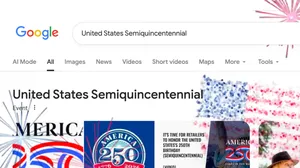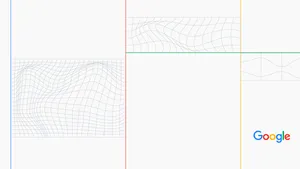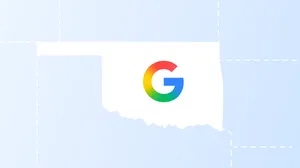Key takeaways from the ad tech trial
This week we finished making our case in the Department of Justice’s lawsuit about some of our advertising technology.
Here’s a recap of what we presented and the arguments we made during the trial as the presentation of evidence concluded:
The DOJ claimed Google doesn’t do enough to help competitors. In fact, we do a lot.
The DOJ wants to force Google to build tools that would let other companies, who don’t have our standards for safety and security, market to our customers and use our technology. And that’s despite the fact that we already go above and beyond legal requirements in making tools that others can use. As Neal Mohan, now CEO of YouTube, said: “Our strategy is straightforward. We want to grow the overall display advertising pie for everyone in the industry.”
Witnesses such as James Avery, founder and CEO of Kevel, and the DOJ’s own economic expert, Professor Robin Lee, confirmed that some competitors simply want Google to build more direct integrations from our tools to competitors’ tools. Others went a step further. Stephanie Layser, formerly of NewsCorp and now of Amazon, testified regarding Google’s ad tech tools that “the core software should be open source” and a “community asset.” But that “duty to deal” is not what American law requires, since no company would want to invest in complex platforms only to have them handed over to others.
The challenged practices benefited customers. And most have already been replaced by newer technologies.
Nobel-Prize-laureate auction economist Paul Milgrom testified that “every one of the conducts we’ve described — Google’s programs — benefited its own customers, either advertisers or publishers or both,” finding that “Google’s changes to its own auction were improvements at the time in which they occurred relative to what had come before.”
Trial testimony made clear that virtually all of the challenged practices haven’t been used for years. The DOJ’s own expert conceded that of the five alleged anticompetitive actions in the case, the “only one that's in effect today is UPR [unified pricing rules]” and we heard evidence that UPR had a positive impact on revenue for publishers and simplified bidding for advertisers.
The DOJ’s claims missed the two-sided market for matching buyers and sellers of digital ads, where Google’s integrated ad tech offerings are cheaper, safer and more effective for customers.
In his testimony, Index Exchange CEO Andrew Casale compared ad exchanges to a platform that facilitates transactions between credit card holders and merchants. In this two-sided market, we showed the Court that Google’s integrated ad tech stack offers services that are cheaper, safer, and more effective. Per Bjorke, Director, Product Management for our Ad Traffic Quality team, showed how Google’s “end-to-end integration” offers safety benefits by letting us “much more effectively keep bad actors out.”
We also showed how Google’s ad tech fees are lower than reported industry averages. In fact, as Yale Professor Judith Chevalier explained, "using Google tools actually has a lower revenue share” when compared to competitors’ full stack average revenue shares, and it is on average “less expensive to use Google-to-Google than using third-party-to-third-party” tools to connect advertisers with publishers.
Google witnesses testified that ad buyers and sellers benefit from the integration of Google’s tools. As Neal Mohan put it: “Having a strong advertiser side benefited our publishers, and having a strong publisher side benefited our advertisers.”

Ad tech platforms compete fiercely for the business of publishers and advertisers.
The testimony of industry witnesses established that ad tech is intensely competitive, with fierce competition between companies like Facebook, Amazon, and Microsoft. Rajeev Goel, Pubmatic CEO, said ad tech companies face “intense competition in the marketplace” and are “confronted by rapidly changing technology [and] evolving industry standards and consumer preferences.” Todd Parsons, Chief Product Officer at Criteo, likewise acknowledged competing “vigorously” with Google, Amazon, and Facebook. A 2017 memo from AppNexus to Microsoft CEO Satya Nadella described how Amazon was “winning” and that Google was “vulnerable and on the ropes,” creating an opportunity for Microsoft.
Counter to the DOJ’s claims, the evidence showed that header bidding is alive and well, reflecting vibrant competition.
The DOJ’s claims that we prevented customers from using header bidding were contradicted by its own witnesses, who said that “header bidding made the market hypercompetitive.” Tom Kershaw, former CTO of Magnite, concurred that header bidding “is alive and well today.” Stephanie Layser agreed that Prebid, another header bidding product, “made the advertising ecosystem more competitive.”

Publishers and advertisers always had control over how ads are bought and sold.
The DOJ claimed Google has too much control over how ads are bought and sold, but the Court heard repeatedly that publishers and advertisers are in the driver’s seat. Market competition means that advertisers and publishers can choose to mix and match from numerous ad tech platforms. As just one example, USA Today testified that it uses 24 or 25 programmatic ad tech tools.
Moreover, publishers can use as many or as few Google’s tools and features as they would like. Gannett executive Tom Wolfe acknowledged that it is the publisher that “decides what ad technology to permit to be involved in” online ad auctions. And the DOJ's own witnesses, including Stephanie Layser and Andrew Casale, admitted that publishers using Google Ad Manager set their own price floors. Sarah Stefaniu, from Google’s Global Solutions team, pointed out that advertisers “have a lot of options they can choose from today to serve their ads.”

The DOJ imagined markets that don’t exist in reality and ignored important ways that ad buyers and sellers buy and sell ads.
In trying to show that Google has market power, the DOJ had to hypothesize a market limited to banner ads on websites. But that blinkered definition misses many other types of display ads, let alone all the other places people see ads – in apps, on social media and on connected TV. Benneaser John, CTO at Xandr after it was bought by Microsoft, testified that its integrated ad tech platform transacts across a whole range of digital advertising surfaces and formats.
To try to win its case, the DOJ labored to come up with a market for “open web display advertising.” But many of its witnesses acknowledged that they had heard the term only in the context of this lawsuit, never in the real world. Even the DOJ’s own expert testified: “That particular combination of four words is not used commonly.” Andrew Casale testified that putting the four words together “is just not a common way we speak in ad tech.”
In reality many digital ads are not sold on ad exchanges and most publishers don’t use Google Ad Manager. Direct deals, where ad buyers and sellers bypass an exchange entirely, make up 70% of all digital ads spending. As our employees testified, our products help advertisers and publishers streamline traditional, manual negotiation by incorporating “features that come from the programmatic or the real-time bidding world.” Yet the DOJ excluded direct deals, even those using ad tech tools, from its alleged markets.

The DOJ also ignored AdSense, which is used by far more publishers than Google Ad Manager, and DFP Small Business, even though these tools, as Scott Sheffer, VP of global partnerships at Google explained, also enable publishers to monetize their inventory and provide access to Google Ads advertiser demand.
After a three-week trial, it’s clear that the DOJ’s case missed the forest for the trees: There’s intense competition in ad tech, where ad buyers and sellers have plenty of choice. And Google’s services have helped publishers, advertisers, and consumers. Our employees who work on ad tech services were proud to show not only that ad buyers and sellers have many options, but also that when they choose Google it's because our ad tech is simple, affordable, and effective. We look forward to continuing to make our case as it moves forward.






